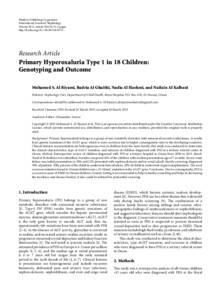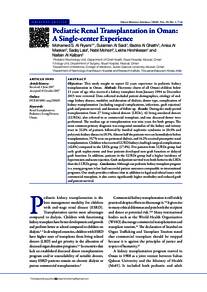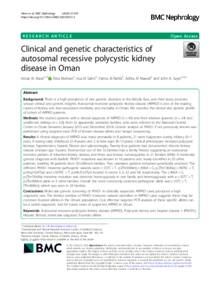وثيقة
Primary hyperoxaluria type 1 in 18 children : genotyping and outcome.
المعرف
DOI : 10.1155/2015/634175
المساهمون
الناشر
Hindawi Publishing Corporation.
ميلادي
2015-03
اللغة
الأنجليزية
الملخص الإنجليزي
Background. Primary hyperoxaluria belongs to a group of rare metabolic disorders with autosomal recessive inheritance. It results from genetic mutations of the AGXT gene, which is more common due to higher consanguinity rates in the developing countries. Clinical features at presentation are heterogeneous even in children from the same family; this study was conducted to determine the clinical characteristics, type of AGXT mutation, and outcome in children diagnosed with PH1 at a tertiary referral center in Oman. Method. Retrospective review of children diagnosed with PH1 at a tertiary hospital in Oman from 2000 to 2013. Result. Total of 18 children were identified. Females composed 61% of the children with median presentation age of 7 months. Severe renal failure was initial presentation in 39% and 22% presented with nephrocalcinosis and/or renal calculi. Family screening diagnosed 39% of patients. Fifty percent of the children underwent hemodialysis. 28% of children underwent organ transplantation. The most common mutation found in Omani children was c.33-34insC mutation in the AGXT gene. Conclusion. Due to consanguinity, PH1 is a common cause of ESRD in Omani children. Genetic testing is recommended to help in family counseling and helps in decreasing the incidence and disease burden; it also could be utilized for premarital screening.
المجموعة
ISSN
2090-214X
URL المصدر
قالب العنصر
مقالات الدوريات



